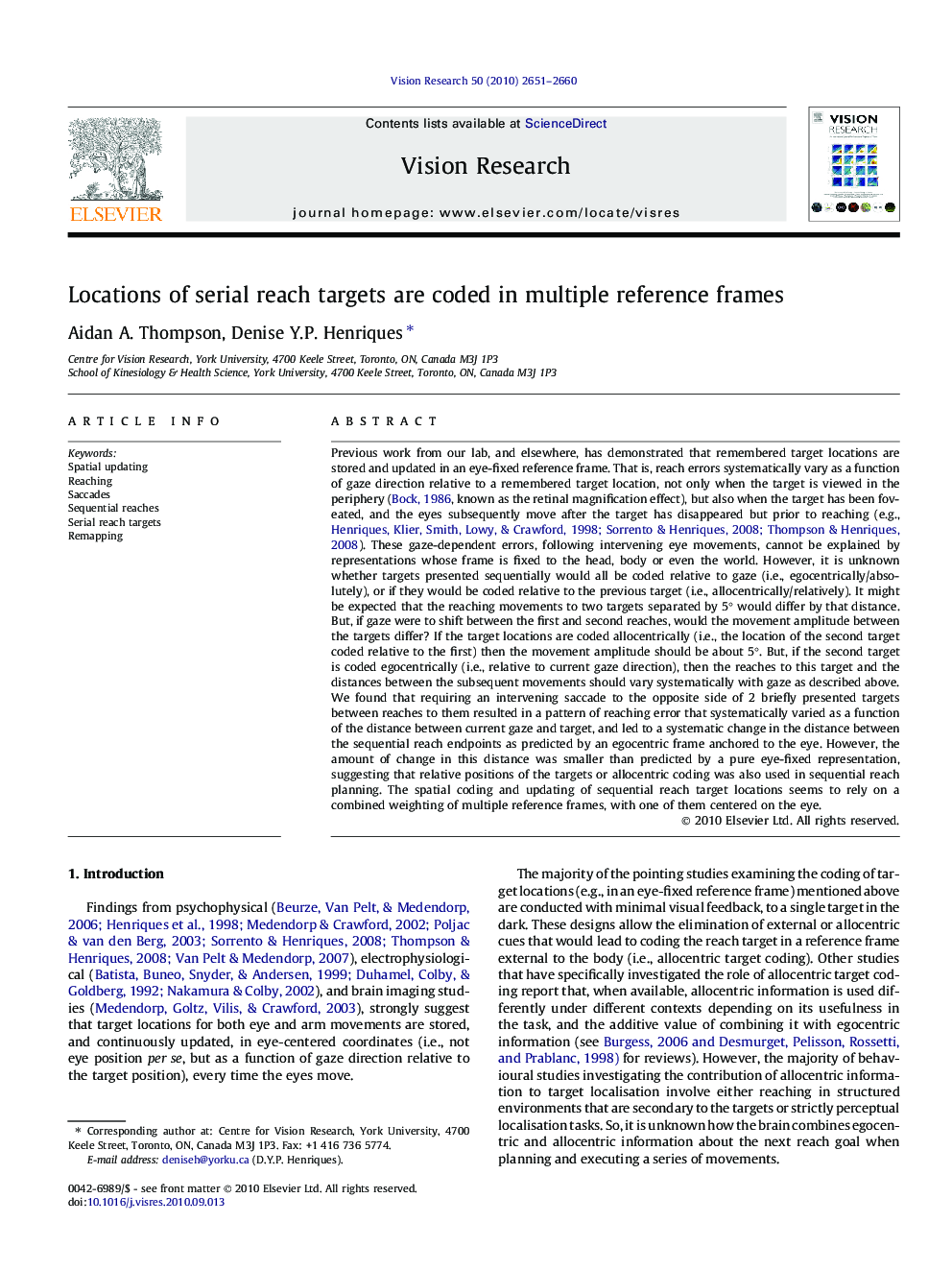| Article ID | Journal | Published Year | Pages | File Type |
|---|---|---|---|---|
| 4034219 | Vision Research | 2010 | 10 Pages |
Previous work from our lab, and elsewhere, has demonstrated that remembered target locations are stored and updated in an eye-fixed reference frame. That is, reach errors systematically vary as a function of gaze direction relative to a remembered target location, not only when the target is viewed in the periphery (Bock, 1986, known as the retinal magnification effect), but also when the target has been foveated, and the eyes subsequently move after the target has disappeared but prior to reaching (e.g., Henriques et al., 1998, Sorrento and Henriques, 2008 and Thompson and Henriques, 2008). These gaze-dependent errors, following intervening eye movements, cannot be explained by representations whose frame is fixed to the head, body or even the world. However, it is unknown whether targets presented sequentially would all be coded relative to gaze (i.e., egocentrically/absolutely), or if they would be coded relative to the previous target (i.e., allocentrically/relatively). It might be expected that the reaching movements to two targets separated by 5° would differ by that distance. But, if gaze were to shift between the first and second reaches, would the movement amplitude between the targets differ? If the target locations are coded allocentrically (i.e., the location of the second target coded relative to the first) then the movement amplitude should be about 5°. But, if the second target is coded egocentrically (i.e., relative to current gaze direction), then the reaches to this target and the distances between the subsequent movements should vary systematically with gaze as described above. We found that requiring an intervening saccade to the opposite side of 2 briefly presented targets between reaches to them resulted in a pattern of reaching error that systematically varied as a function of the distance between current gaze and target, and led to a systematic change in the distance between the sequential reach endpoints as predicted by an egocentric frame anchored to the eye. However, the amount of change in this distance was smaller than predicted by a pure eye-fixed representation, suggesting that relative positions of the targets or allocentric coding was also used in sequential reach planning. The spatial coding and updating of sequential reach target locations seems to rely on a combined weighting of multiple reference frames, with one of them centered on the eye.
Research highlights► Serial reach targets are coded in both allocentric and egocentric reference frames. ► The allocentric frame used codes multiple targets relative to each other. ► The egocentric reference frame used is one centred on the eye. ► The reference frames are combined in a weighted average. ► The weighted average depends on the task-relevance of the cue.
